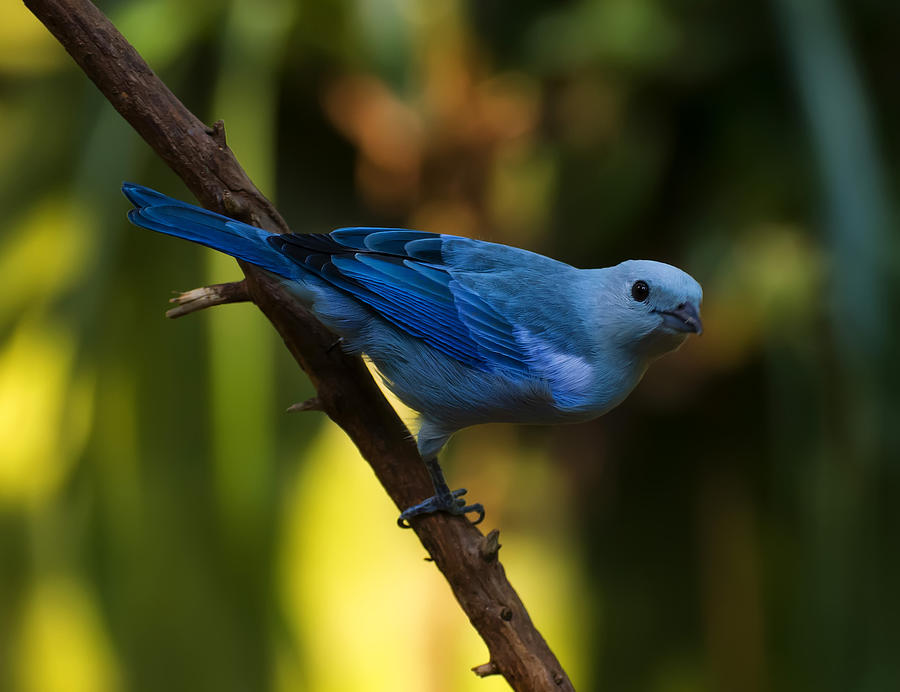
Blue Grey Tanager

by Flees Photos
Title
Blue Grey Tanager
Artist
Flees Photos
Medium
Photograph - Home Decor And Giclee Wall Art By Chris Flees
Description
This is an image of a blue grey tanager (Thraupis episcopus). This is a tropical tree bird. The bird has a range of feathers that go from dark blue (almost black) to grey or blue grey. They are extremely quick and very beautiful. The Tanager falls into the songbird category.
The Blue-grey Tanager (Thraupis episcopus) is a small to medium-sized bird species found in various parts of the Americas. Here are some facts about the Blue-grey Tanager:
Appearance: As the name suggests, the Blue-grey Tanager has predominantly blue-grey plumage on its upperparts, wings, and tail. Its underparts are pale gray to white. The bird has a stout beak and dark eyes. However, it's important to note that individual variations and subspecies may exhibit slight variations in plumage colors.
Geographic Range: The Blue-grey Tanager is native to a wide range of habitats in Central and South America, including Mexico, Belize, Costa Rica, Panama, Venezuela, Colombia, Ecuador, Brazil, Bolivia, and Peru. It is also found in Trinidad and Tobago.
Diet: Blue-grey Tanagers are primarily frugivorous, feeding on a diet consisting mainly of fruits, berries, and occasionally insects and nectar. They play a role in seed dispersal within their habitat.
Vocalizations: Blue-grey Tanagers are known for their varied and melodious songs. They produce a series of clear and musical notes, often described as a "warbling" or "whistling" song. They also make other vocalizations such as chirps and calls to communicate with their flock members.
Social Behavior: Blue-grey Tanagers are social birds that form small to medium-sized flocks. They often forage and move together, and their social interactions include mutual preening and vocal communication. They are also known to join mixed-species flocks with other bird species.
Breeding: Blue-grey Tanagers build cup-shaped nests using plant materials such as twigs, leaves, and moss. The female typically lays 2-4 eggs, which are incubated by both parents for about 12-14 days. Both parents participate in caring for the hatchlings until they fledge.
Conservation Status: The Blue-grey Tanager is not considered globally threatened and is categorized as a species of "Least Concern" by the IUCN. Its population is generally stable, although local declines may occur due to habitat loss and fragmentation caused by deforestation and urbanization.
The Blue-grey Tanager is appreciated for its attractive plumage and pleasant song. It is often spotted in gardens, parks, and forested areas, bringing color and musical sounds to its tropical and subtropical habitats.
This image is © Chris Flees all rights reserved
Uploaded
May 20th, 2014
Embed
Share





















































